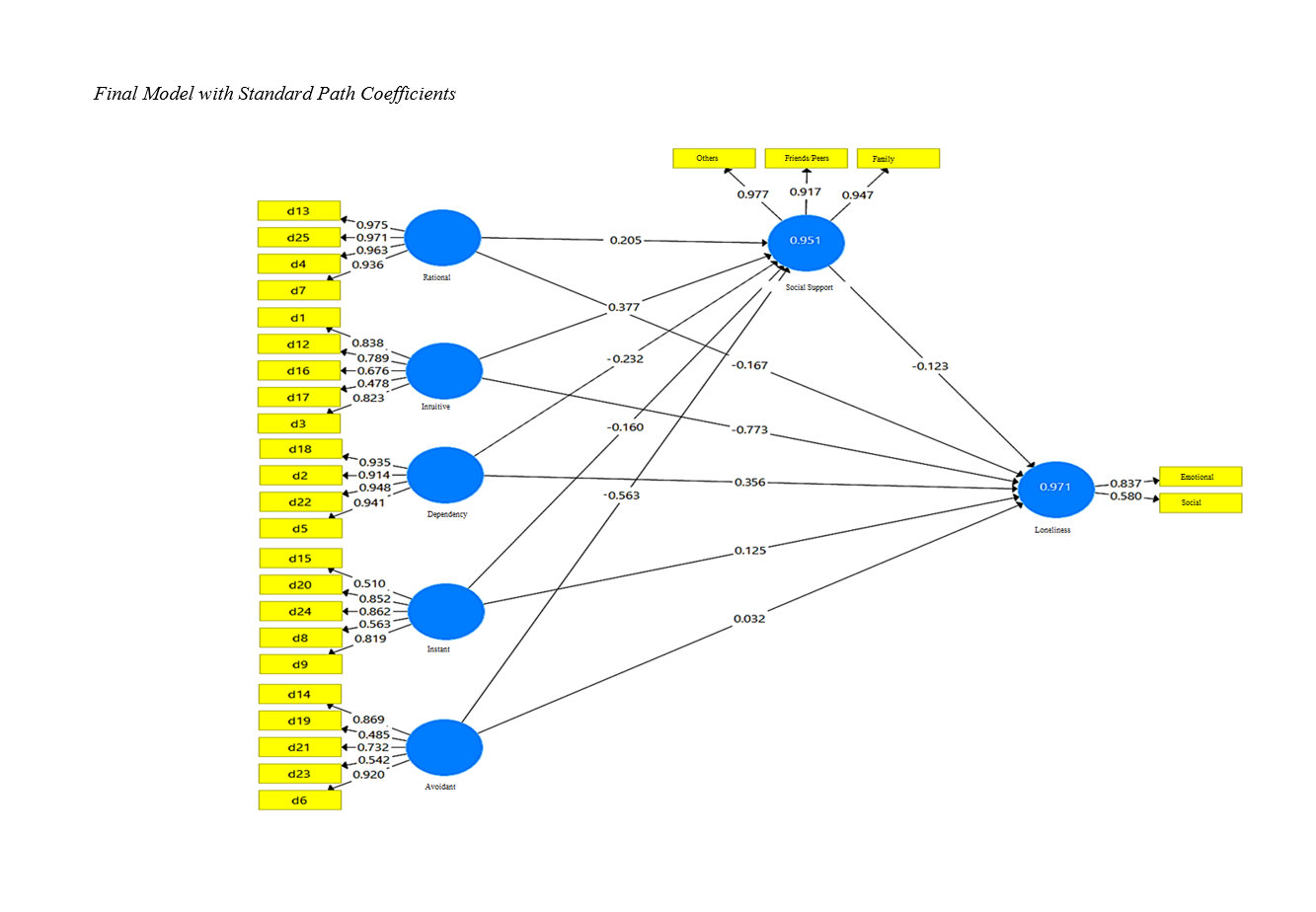Prediction of Loneliness Based on Decision-Making Styles in Couples with the Mediation of Social Support
Keywords:
Loneliness, Decision-making styles, Social SupportAbstract
Objective: This study aimed to predict feelings of loneliness based on decision-making styles in couples, mediated by social support.
Methods and Materials: The research was correlational in nature. The study population consisted of couples attending counseling centers in District Four of Tehran in 2021. The sample size was determined to be 250 individuals, selected through stratified random sampling. Data collection tools included: the Russell Loneliness Scale (1978), the Scott and Bruce Decision-Making Styles Inventory (1995), and the Zimet et al. Social Support Scale (1988). Statistical methods used descriptive statistics, SPSS software, path analysis, t-tests, Sobel test, and PLS software.
Findings: The results indicated that rational and intuitive decision-making styles were positively related to social support, while dependent, spontaneous, and avoidant decision-making styles had an inverse relationship with social support. There was a negative relationship between rational and intuitive decision-making styles and feelings of loneliness, and a direct relationship between dependent, spontaneous, and avoidant decision-making styles and feelings of loneliness.
Conclusion: Decision-making styles were predictors of feelings of loneliness. Additionally, social support played not only a mediating role but also amplified the relationship between decision-making styles and feelings of loneliness.
Downloads

Downloads
Additional Files
Published
Issue
Section
License
Copyright (c) 2024 Fatemeh Jormoze (Author); Hasan Ahadi (Corresponding Author); Javad Khalatbari (Author)

This work is licensed under a Creative Commons Attribution-NonCommercial 4.0 International License.








